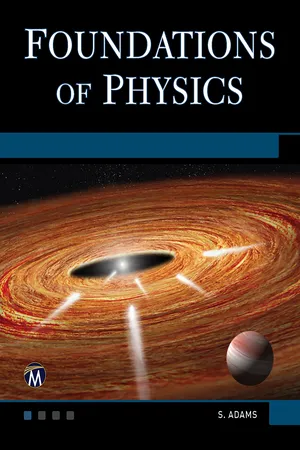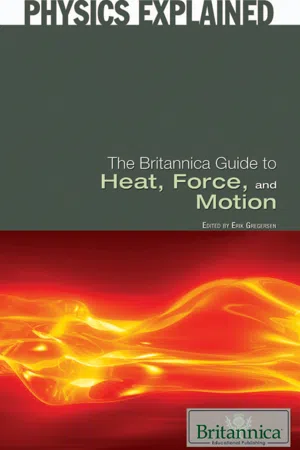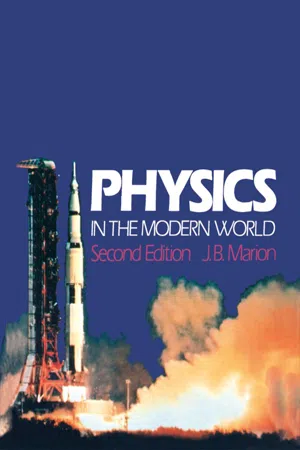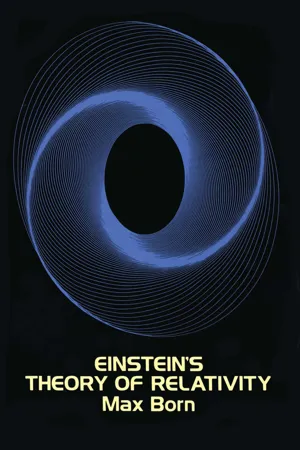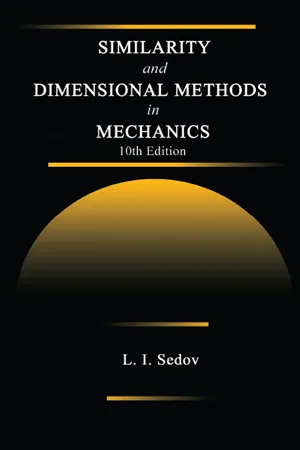Physics
Gravity on Different Planets
Gravity on different planets varies based on their mass and radius. The acceleration due to gravity is stronger on larger, more massive planets and weaker on smaller, less massive ones. This means that an object's weight would be different on each planet, even though its mass remains constant.
Written by Perlego with AI-assistance
Related key terms
Related key terms
1 of 4
Related key terms
1 of 3
10 Key excerpts on "Gravity on Different Planets"
- eBook - ePub
Understanding the Universe
From Quarks to the Cosmos
- Don Lincoln(Author)
- 2004(Publication Date)
- WSPC(Publisher)
At our present level of knowledge, there appear to exist four forces. These forces are gravity, the electromagnetic force, the strong (or nuclear) force and the radiation-causing weak force. Gravity is perhaps the most familiar. It keeps us on Earth and guides the stars and planets through the cosmos. Gravity is always an attractive force, which means gravity will always make two particles want to move closer to one another. When one thinks about forces, an important question is always “What governs the strength of the force?” For gravity, just three things are relevant: (a) the mass of each of the two objects, (b) the distance separating the centers of the two objects and (c) a constant factor which is related to how strong the gravity force is, once the other two factors are taken into account.GravityMass is a somewhat tricky concept, with which most of us have a mildly incorrect familiarity. Everyone is familiar with the concept of weight (in my case an often depressing familiarity). While weight is not mass (weight is really the force due to gravity), weight is related to mass. A person who weighs more also has a greater mass. However, while weight goes away in outer space, mass does not. Further, while your weight would change if you were to stand on a different planet, again your mass would remain unchanged. So this is a very important idea: weight can change, but mass doesn't. If it makes you more comfortable, you can use the two interchangeably as long as you stay on Earth (just don't tell my physicist colleagues that I said it was OK). Really weight is a force; a greater weight means that you experience a greater force. The reason that one's weight can change, while one's mass is unchanged is because of how gravity works. The force due to gravity is proportional to the mass of one object, multiplied by the mass of the second object. Since Jupiter is the biggest planet, it has a much larger mass than Earth. So, if you were standing on Jupiter, you would feel a greater force than on Earth because, while your mass is unchanged, Jupiter's mass is much greater. Since your weight is related to your mass multiplied by the planet's mass, voilà, you're heavier on Jupiter. And, when you're deep in outer space, there is no nearby planet, so the planet's mass is zero. Now you multiply your (unchanged) mass by the zero mass of the planet and the result is zero (recall that anything multiplied by zero is zero). So, no force in outer space. - eBook - ePub
- Steve Adams(Author)
- 2019(Publication Date)
- Mercury Learning and Information(Publisher)
23Gravitational Field23.1 Gravitational Forces and Gravitational Field StrengthGravity is one of the four fundamental forces. It has infinite range and obeys a similar inverse-square law to electrostatics. All masses create gravitational fields, but, unlike the electrostatic forces between charges, which can be attractive or repulsive, gravitational forces are always attractive. The gravitational force acting on a mass close to the surface of the Earth is called weight.Newton stated that two point masses would exert an attractive force on each other that is directly proportional to the product of the masses and inversely proportional to their separation. The minus sign indicates attraction.23.1.1 Newton’s Law of GravitationG is the universal constant of gravitation, G = 6.674 × 10−11 Nm2 kg−2 .Newton was also able to show that the force of attraction between spheres of uniform density is the same as the attraction between two point masses placed at their centers. This means that we can treat object like planets and stars as point masses when considering orbital motion. It is also important to note that, by Newton’s third law, the forces on each mass have the same magnitude, even if the masses are different. For example, the weight of an apple in the Earth’s gravitational field is the same as the weight of the Earth in the apple’s gravitational field. It is also the case that the gravitational force exerted on the Earth by the Moon is equal in magnitude to the gravitational force exerted on the Moon by the Earth.The resultant gravitational force on a body affected by the gravitational fields of several other objects (e.g., the Earth affected by the Sun, Moon, and other planets) is the vector sum of the gravitational forces from each of the other objects.23.1.2 Gravitational Field StrengthThe idea that gravitational forces arise from a gravitational field removes the difficulty of an action-at-a-distance explanation. The Moon is attracted to the earth because it experiences a force from the gravitational field where it is, i.e., a local force - eBook - ePub
- Britannica Educational Publishing, Erik Gregersen(Authors)
- 2010(Publication Date)
- Britannica Educational Publishing(Publisher)
CHAPTER 10 G RAVITY : T HE F ORCE OF A TTRACTION G ravity is the universal force of attraction acting between all matter. It is by far the weakest known force in nature and thus plays no role in determining the internal properties of everyday matter. On the other hand, through its long reach and universal action, it controls the trajectories of bodies in the solar system and elsewhere in the universe and the structures and evolution of stars, galaxies, and the whole cosmos. On Earth all bodies have a weight, or downward force of gravity, proportional to their mass, which Earth’s mass exerts on them. Gravity is measured by the acceleration that it gives to freely falling objects. At Earth’s surface the acceleration of gravity is about 9.8 metres (32 feet) per second per second. Thus, for every second an object is in free fall, its speed increases by about 9.8 metres per second. At the surface of the Moon the acceleration of a freely falling body is about 1.6 metres per second per second. The works of Isaac Newton and Albert Einstein dominate the development of gravitational theory. Newton’s classical theory of gravitational force held sway from his Principia, published in 1687, until Einstein’s work in the early 20th century. Newton’s theory is sufficient even today for all but the most precise applications. Einstein’s theory of general relativity predicts only minute quantitative differences from the Newtonian theory except in a few special cases - eBook - ePub
- Jerry Marion(Author)
- 2012(Publication Date)
- Academic Press(Publisher)
6GRAVITATION AND SPACE TRAVEL
Publisher Summary
Every action taking place around us is the result of the gravitational or the electric force. The gravitational force is responsible for the motion of falling objects, the motion of the planets around the sun, and even the motions of stars and galaxies through space. All elastic forces are due to the electric attraction and repulsion between the electric charges in atoms and molecules. There are four fundamental forces that govern all processes in nature: (1) gravitational force, (2) electric force, (3) strong force, and (4) weak force. The chapter presents the gravitational force and explains how the gravitational force influences the motions of planets and space vehicles. It discusses Kepler’s first, second, and third law of planetary motion. A satellite rotates at the same rate as the earth, and to an observer on the earth, the satellite will appear to remain stationary.In our everyday experience we encounter a variety of forces. There is the force that presses us to the surface of the Earth. There are elastic forces in springs, rubber bands, and bent metal. There are hydraulic forces that operate automobile brakes and drive water through pipes. And, of course, there are many others. The remarkable fact about all of these forces is that they are the result of only two basic forces—the gravitational force and the electric force . In fact, every action that we see taking place around us is the result of the gravitational or the electric force. The gravitational force is responsible for the motion of falling objects, the motion of the planets around the Sun, and even the motions of stars and galaxies through space. All elastic forces are due to the electric attraction and repulsion between the electric charges in atoms and molecules.Gravitational and electric forces can account for all of the events that we directly observe taking place in Nature. But there are many important phenomena that occur in the subatomic domain that we cannot see or experience directly. In this century, as instruments have been developed for examining the processes that take place in atomic nuclei, we have become aware that gravitational and electric forces are inadequate to account for nuclear phenomena. The study of processes involving nuclear and elementary particle interactions has shown that there are two additional basic forces; these are called the nuclear or strong force (which is responsible for the binding together of protons and neutrons to form nuclei) and the weak - eBook - ePub
- Max Born(Author)
- 2012(Publication Date)
- Dover Publications(Publisher)
heavy relative to one another. The earth, being a planet, is attracted towards the sun, but it itself attracts the moon. Obviously this is only an approximate description of the true state of affairs, in which the sun, moon, and earth attract one another. Certainly, as far as the orbit of the earth round the sun is concerned, the latter may, to a high degree of approximation, be regarded as at rest, because its enormous mass hinders the coming into play of appreciable accelerations; and conversely, the moon, on account of its small mass, does not come into account. But an exact theory will have to take into consideration these influences, called “perturbations.”Before we begin to consider more closely this aspect, which signifies the chief advance of Newton’s theory, we shall give Newton’s law its final form. We saw that a planet situated at a distance r from the sun experiences from it an attraction of the value (21 )where C is a constant depending only on the properties of the sun, not on those of the planet. Now, according to the new view of mutual or relative weight the planet must likewise attract the sun. If M is the mass of the sun and c a constant dependent only on the nature of the planet, then the force exerted on the sun by the planet must be expressed byBut earlier, in introducing the concept of force (II , 1 , p. 14 ), we made use of the principle that the reaction equals the action, which is one of the simplest and most certain laws of mechanics. If we apply it here, we must set orFrom this it follows thatmC = Mc,orTherefore this ratio has the same value for both bodies (sun and planets), and hence also for any body whatsoever. If we call this value then we may writeThe factor of proportionality k is called the gravitational constant.The Newtonian law of general gravitation then assumes the symmetrical formIn words it states:Two bodies attract each other with a force that is proportional to the mass of each body and is inversely proportional to the square of their distance apart.4. Celestial Mechanics
- eBook - ePub
- Morris Kline(Author)
- 2013(Publication Date)
- Dover Publications(Publisher)
And after the same manner that a projectile, by the force of gravity, may be made to revolve in an orbit, and go round the whole earth, the moon also, either by the force of gravity, if it is endowed with gravity, or by any other force, that impels it toward the earth, may be continually drawn aside towards the earth, out of the rectilinear [straight-line] way which by its innate force [inertia] it would pursue; and would be made to revolve in the orbit which it now describes; nor could the moon without some such force be retained in its orbit. If this force were too small, it would not sufficiently turn the moon out of a rectilinear course; if it were too great, it would turn it too much, and draw the moon from its orbit toward the earth. It is necessary that the force be of a just quantity, and it belongs to the mathematicians to find the force that may serve exactly to retain a body in a given orbit with a given velocity;. . .Fig. 15–3. Projectiles shot out horizontally from the top of a mountain with increasing horizontal velocities.This argument which showed how the motion of the moon around the earth could be related to motions occurring on earth was immediately extended to the motions of the planets about the sun. The planets, set into motion some-how, are attracted by the sun and are presumably pulled in just enough to keep them from flying off into space or from crashing into the sun.Thus Newton had some reason to suppose that the same force which pulled projectiles to earth caused the moon to revolve around the earth and the planets to revolve around the sun. He had now to determine precisely how strong the force of gravitation is, that is, how it depends upon the bodies involved and upon the distances between the bodies.15–7 MASS AND WEIGHT
Before we can understand Newton’s law of gravitation we must distinguish two properties of matter, mass and weight. Newton’s first law of motion says that if no force is applied, bodies continue at the speed they already have. Stated otherwise, the law says that bodies have inertia; they persist in the motion they already have unless compelled to do otherwise by the application of force. This inertia or resistance of matter to change in speed is called inertial mass or just mass .Do all objects have the same mass? Not at all. Since mass exhibits itself in an object’s resistance to change in speed, we can appeal to experience to see that different objects may possess different masses. Suppose, for example, that a small and a large ball of lead are at rest on the ground and one wishes to start them moving. Experience tells us that we must exert more force to get the larger ball rolling than to get the smaller one rolling with the same speed. Since more force is required in the first case, the larger ball must possess more mass. Or we can imagine the force that might be required to stop these balls if they were rolling toward us at the same speed. Again, more force would be required to stop the larger one. Thus the masses of objects are not the same. - eBook - ePub
- C. S. Unnikrishnan(Author)
- 2022(Publication Date)
- Jenny Stanford Publishing(Publisher)
As the matter content of the Universe and its gravity are reduced, the gravitational time dilation decreases; the rates of all clocks increase and eventually the possibility of time disappears with the last bit of matter. The only logical possibility is to conclude that the notion of time ceases to exist without matter. So, time does not make any physical sense in an empty space without any matter or energy. This implies the strong conclusion that time does not exist without gravity.Figure 2.2 Gravity as an attractive force, sourced by a mass.2.2 Gravity as a Force
Gravity is most familiar to us as a pulling force (Fig, 2.2). Almost every living organism is sensitive to this. The quantitative and systematic studies on the rate of motion (free fall) under gravity’s pull were taken up by Galileo. The force is large, because the Earth is large; hence, for the practicality of the studies, Galileo had to slow down the motion using inclined planes. (In comparison, the forces that we generate in our bodies are far stronger, as it is clear from the tiny sizes of our bodies compared to the Earth! This is because the muscular forces are electromagnetic in nature, which is incomparably stronger than gravity.) A simple pendulum is another way to study the force of gravity and it offers a simple way of determining the local gravitational field, accurate to a part in thousand. This is possible because of the most important feature of gravity that was discovered by Galileo – that the gravitational acceleration, or the rate of increase in the speed of motion under gravity, does not depend on the mass or other properties of the falling object (Galileo, 1638 ). This is called the Universality of Free Fall (UFF). When a bob tied to a string is released from an angle, it is really falling under gravity. The constraint of the string pulls it up again, and then the motion repeats, as the oscillations of a pendulum. The Universality of Free Fall implies that the period of the pendulum depends only on its length and gravity, and not on the mass or the nature of its bob.The law of the force of gravity was discovered and formulated mathematically by Newton (Newton, 1846). As everyone knows, the gravitational force between two particles or regular spherical objects with masses m1 and m2 at the separation r - eBook - ePub
- L. I. Sedov(Author)
- 2018(Publication Date)
- CRC Press(Publisher)
In connection with this it should be emphasized that in Newton’s law of universal gravitation it is implicitly implied that time is absolute and space is three dimensional and Euclidean. According to Newton, the force of gravitational attraction does not depend on any other characteristic beside these mentioned. The establishment of the law of universal gravitation is guided chiefly by the notion of forces as vector quantities. Experimental data and all observed consequences that follow from Newton’s law of universal gravitation confirm this law with great accuracy.Nowadays, theories are developed in which the models for gravitational interactions become more complicated and are combined with models for fundamental concepts of space and time. However, in celestial mechanics, quantitative improvements in the gravitation law can be neglected, as a rule. This is also true for many cases of human practical activities. In the course of describing mechanical interactions with the aid of forces, it is necessary to establish for these forces the corresponding laws, which can be different by nature. The methods used are similar to the establishment of the gravitation law. This law was obtained from observations and measurements, processed in accordance with Newton’s second law, in which the acceleration of moving objects is determined either directly with respect to the inertial coordinate systems or in any other coordinate system by exact kinematic formulas, linking acceleration of a given material point in an inertial system and its acceleration in an arbitrary (and, possibly, deformed) noninertial frame of reference.* - eBook - ePub
- Ernan McMullin(Author)
- 2016(Publication Date)
- University of Notre Dame Press(Publisher)
What made this whole question even more intractable was the ambiguity of Newton’s terms, ‘gravity’ and ‘essential’. It will be helpful to point up some distinctions that Newton did not make explicit, in an attempt to unravel the multiple meanings that the term ‘gravity’ was later seen to possess. The gravity of a body can be construed either as active (A) or as passive (P), depending on whether the body is considered as attracting or being acted upon. It can be actual (E) or dispositional (D), depending on whether gravity is attributed to a body on the basis of its actually exercising attraction (or actually being attracted) or only on the basis of its capacity to act (or be acted upon). Thus, for instance, a body alone in a void would not exhibit gravity in the former sense, but would in the latter. Finally, ‘gravity’ could refer either to the weight (W) or to the mass (M) of a body.In Definition V of the Principia , where the term ‘gravity’ is first introduced, Newton speaks of it both as a “force” and as “that by which bodies tend to the center of the earth”. A projectile is drawn out of its rectilinear path “by its gravity” or “by the force of its gravity”. The metaphors of agency are plain: gravity is not just a neutral tendency to move in the presence of other bodies. It is a force which is elicited in a body and alters its state of motion. Or it is its mass: “the less [the projectile’s] gravity is, or the quantity of its matter . . . the less it will deviate”. It was not necessary for Newton to distinguish here between mass and weight; ‘gravity’ evidently covered both.But this would no longer do when the question Is gravity essential to matter? was raised. It then became crucial to know which sense of gravity was intended. E- and W-gravity could not qualify as essential, since a body alone in a void would have neither. PD-gravity, the disposition to be acted upon by other bodies (or the tendency to move in the presence of other bodies), would presumably be a universal quality. The troublesome one, from Newton’s standpoint, was AD-gravity (the disposition to attract other bodies), with its overtones of action at a distance. To regard it as essential (or even as universal) would leave him open to the sort of objection to which he was most sensitive, as the letter to Bentley illustrates. - eBook - ePub
- Jayant V. Narlikar(Author)
- 2012(Publication Date)
- Dover Publications(Publisher)
2 Gravity According to NewtonKNELLER: To you the universe is nothing but a clock that an almighty clock maker has wound up and set going for all eternity.NEWTON: Shall I tell you a secret, Mr. Beautymonger? The clock does not keep time. If it did there would be no further need for the Clock maker ... Can you, who know everything because you and God are both artists, tell me what is amiss with the perihelion of Mercury?KNELLER: The what? NEWTON: The perihelion of Mercury. KNELLER: I do not know what it is. NEWTON: I do. But I do not know what is amiss with it. Not until the world finds this out can it do without the Clock maker in the heavens ...From: In Good King Charles’s Golden Days by George Bernard ShawIn this chapter and the next, we will take a look at some of the basic properties of gravity, properties which are useful to the astrophysicist in his attempts to understand the violent phenomena in the universe. As mentioned in Chapter 1, gravity was the first of the four known basic forces to be discussed within the framework of science. Yet even up to the present day, in spite of the work of geniuses like Newton and Einstein, gravity remains full of mysteries. The physicist today is beginning to get a glimmer of understanding of the scheme which holds together the other three basic forces; but as yet he cannot find a proper place for gravity in such a unification scheme.In following the properties of gravity we will begin with a historical approach. For in this way we see how the universal nature of the force of gravity was gradually brought home to the astronomer and the physicist. We will keep the mathematical description of the various phenomena to the bare minimum, although a few basic formulae and order of magnitude calculations cannot be avoided.The Laws of Motion
The first mathematical statement describing the behaviour of gravity as a basic force of physics came from Isaac Newton (1642–1727). In 1687, in his classic book Philosophiae Naturalis Principia Mathematica
Index pages curate the most relevant extracts from our library of academic textbooks. They’ve been created using an in-house natural language model (NLM), each adding context and meaning to key research topics.
Explore more topic indexes
Explore more topic indexes
1 of 6
Explore more topic indexes
1 of 4

